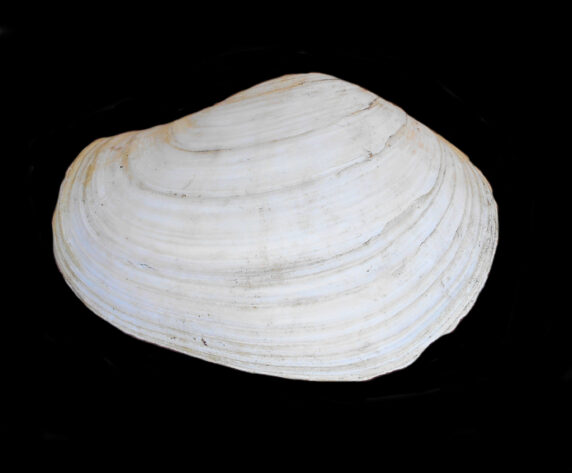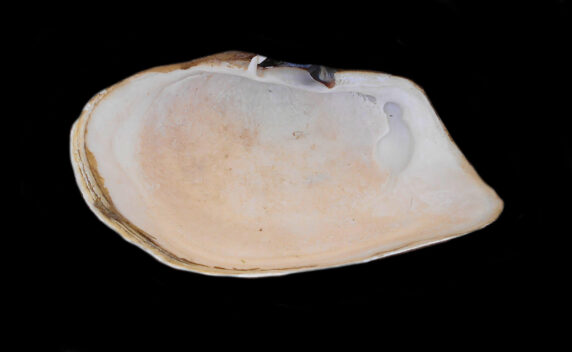Cortez Geoduck Shell, Panopea globose

 Cortez Geoduck Shell, Panopea globose. Shell collected from within the estuary of the Magdalena Bay complex, Baja California Sur, October 2018. Size: 12.3 cm (4.8 inches) x 6.6 cm (2.6 inches).
Cortez Geoduck Shell, Panopea globose. Shell collected from within the estuary of the Magdalena Bay complex, Baja California Sur, October 2018. Size: 12.3 cm (4.8 inches) x 6.6 cm (2.6 inches).
The Cortez Geoduck, Panopea globose (Dall, 1898), is a bivalve mollusk that is a member of the Hiatellidae Family of Rock Borers and Giant Clams. The shell has an oval profile that may be thin or thick and they are very inflated, especially around the centralized beak and is sculpted with wavy growth ridges. They have a well rounded anterior end and the shell narrows toward the posterior end, where it ends abruptly. They have a gaping separation at the posterior end, through which the siphon passes; the gape is narrower at the anterior end. The exterior of the shell is white and semi-glossy; the interior is white. Cortez Geoduck shells reach a maximum length of 16.4 cm (6.5 inches) in length and 8.6 cm (3.4 inches) in height.
Cortez Geoduck clams are found buried, up to 40 cm (3 feet), in muddy sand substrate at depths between 10 m (35 feet) and 100 m (330 feet). They range from Magdalena Bay, Baja California Sur to the central west coast of mainland Mexico. They are found throughout the Sea of Cortez. The Cortez Geoduck is common along the central and northwest coasts of Baja have now been replaced north of Punta Canoas, Baja California, by the similar looking but larger Pacific Geoduck, Panopea generosa.